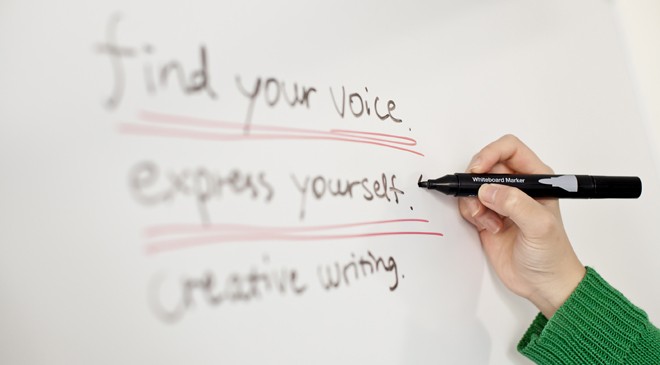
Are creative writing courses the way to go when looking for a writing outlet?

It is Hemingway who famously said "It is easy to write. Just sit in front of your typewriter and bleed." Bleeding, of course, is an analogy for delving deep into your emotions and experiences and writing from there. But is there a correct form of bleeding, a method, a structure or an understanding of the craft that would make it more effective?
Anyone who has ever tried to write an essay in school won’t deny the all encompassing parts of a story they were taught. There was the introduction, the middle, the climax, the anti climax and finally the conclusion. And then there had to be a certain structure to the paragraphs as well. For one they had to be different sizes i.e. visibly different in size from each other when put on paper. Apparently this made things more interesting for the reader.
Advanced creative courses though go beyond such amateurish ideas but it is essentially this that creative writing courses promise to teach; the art of putting down what the writer has to say in a more coherent manner. They expose the individual to various types of writing and authors, discussing technicalities such as the plot, setting, characterisation, dialogue, metaphor, syntax and so on. "It helped me open my eyes to what is good literature and exposed me to different genres and styles," says Mahum Qureshi who took two creative writing courses in University. And that is one of the basic purposes of a creative writing course, to create background knowledge and build confidence.
Writers, over the years, like Hemingway have given countless pieces of advice to young writers. There are books outlining the practices, routines and thoughts of famous writers -- the ones who kept a journal such as Virginia Woolf, Franz Kafka and C.S Lewis among others. Aspiring writers, at times, go over their habits like ritual, looking for clues to reach greatness themselves -- reading into it to at times find an antidote to the writer’s block they are suffering from.
Creative writing courses, largely a modern phenomenon, seem to be another means of looking for inspiration and expanding horizons. For some they are a way to discuss their writing with others, to develop not only their writing skill but also ideas and thoughts.
For Izza Khalid, who took a creative writing course in college, "the articles and assignments to bring out imagination" helped her overcome her writer’s block.
This idea is not entirely new to writers. Mentorship has its own history where writers would regularly exchange their work with each other, discuss ideas and at the same time encourage and critique. The friendship and rivalry between Virginia Woolf and Katherine Mansfield is famous for such a relationship, where each read and tried to learn from the other. The two were allegedly part of The Bloomsbury club, a secret group of intellectuals and writers. The purpose of the group was similar to what creative writing courses hope to achieve today -- bringing together like minded people for introspection.
Despite this noble mission there has been a recurring debate on the efficacy of such courses. Hanif Kureishi, an author who also teaches creative writing at Kingston University, pointed out the flaw in creative writing at a literary festival in Bath in these words: "they teach you a lot of stuff you don’t need to know."
Recent comments by the Swedish Academy member for the Nobel Prize in Literature, Horace Engdahl, have once again brought to light the idea that these courses are trying to create a formula for writing. He goes on to make the age old argument of widening the emotional experience of writers than focusing on technique. Engdahl believes that the funding provided to writers in the form of fellowships isolates them from society. They remove themselves from the necessary contact they had with ordinary individuals when forced to have day jobs as struggling writers. Other writers too, such as Anis Shivani have also called out creative writing courses because they attempt to fabricate experiences and emotion. For him, literature is not "figuring out the essential components of a story or poem" but by understanding the larger meaning of human traditions and politics alongside the writings of great writers like Chekhov.
Shazaf Fatima Haider, and author who also taught creative writing at Indus Valley School of Art and Architecture also says it is "confusing" to come across a student who wants to write but has nothing to write about. For her great creative writing "is born from suffering and has a muscular quality to it.And you can’t fool your reader’s about this."
Such courses might be an attempt at understanding the craft of writing, but the notion remains that writing is about practicing, about trying and failing and also a little about an innate skill to observe and absorb social experiences. The crux of it is that the writer should have a good story to tell, the rest will support that story.
There should be a balance "a golden mean to combine the free flow of creativity with the structure and technicality of writing," as Professor Shaista Sirajuddin puts it when discussing the subject.
It is because of the absence of this that Kureishi finds that 99 per cent of his class is talentless, or Shivani believes that people’s understanding of the craft is simply not enough to produce literature. This is why Engdahl says that creative writing courses are "killing western literature."
For there is no formula to writing; yes a wider knowledge of technique, genres and different works of literature is important, yet it even more imperative to go beyond them, at times break them and be able to tell a compelling a story. One which makes the reader want to turn the page and read on -- clichés and formulas are predictable and so cannot keep the reader on edge.